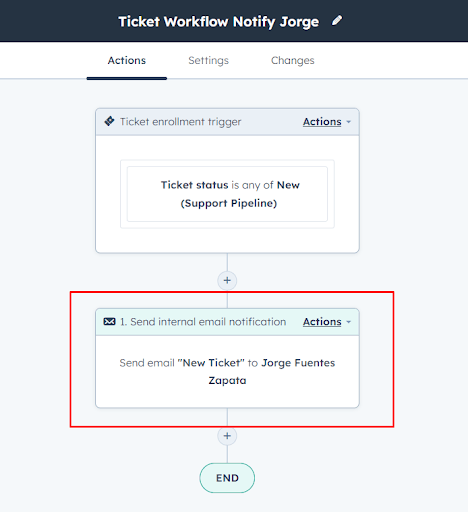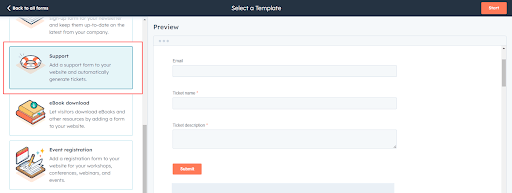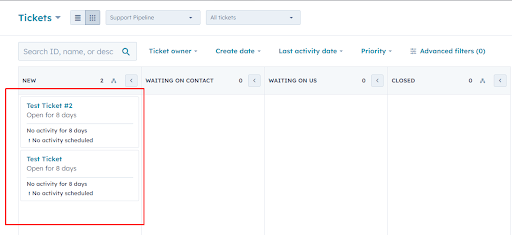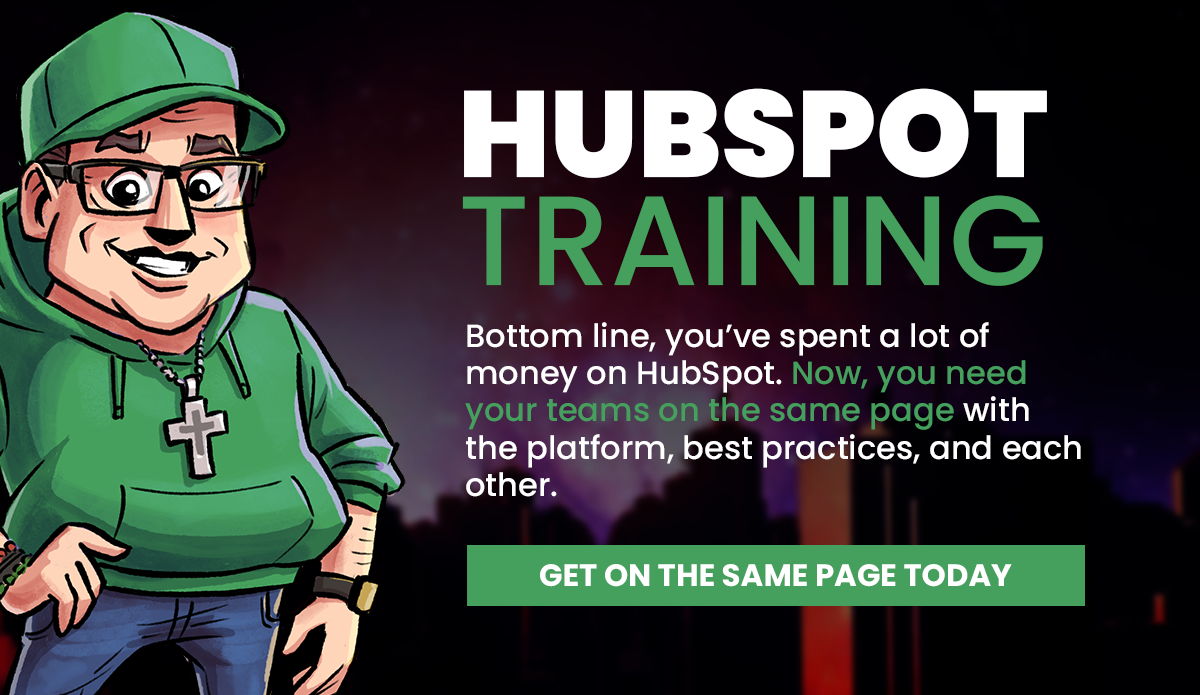5 min read
What Jorge learned: Client Churn, Never Assume, and HubSpot Service Hub Ticketing
 Jorge Fuentes
Aug 30, 2023 4:36:18 PM
Jorge Fuentes
Aug 30, 2023 4:36:18 PM
Rather listen to this post?
You know what time it is! It's time for this months installment of What Jorge Learned! If this is your first time here (or you're simply new to this series), I'm so glad you're here! I'm Jorge. and I work with George, day in and day out, to make HubSpot sing for our clients.
But once a month, I hop on here to share with you what I'm working on, what I've learned (as the title implies), and any other juicy tidbits I think might help you make smarter decisions faster or reframe your perspectives in a new way! Whether that's as a human or with HubSpot.
Here's what I've talked about so far in previous issues:
- What Jorge Learned: 6 HubSpot and Human Lessons I've Learned in My First 60 days
I talked about the importance of HubSpot audits, the secrets to great email copy, how to make client relationships great, and more. - What Jorge Learned: Microsoft Dynamics, newsletters, and community
Next, I talked about one of the most common integrations with the HubSpot Sales Hub, how to get better results from your newsletters (with substance and structure tips), and the importance of community. - What Jorge Learned: Owner's Mentality, Content UX, and the Truth About ChatGPT
And last month, I dove into deeper insights around what it means to truly embrace an owner's mentality, the importance of your content's user experience, and a few sizzling hot takes of my own about ChatGPT.
And now I'm back again, with even more goodness to share with you across three new and wildly different topics that are essential to your success and growth.
Let's talk about client churn
Even with the best of intentions and no mistakes of any kind, losing a client when you're a service-based business is something that's bound to happen. And it doesn't feel great, especially when there's a great relationship at play, and you've worked hard to make the client happy.
Although we provide a lot of support in the area of sales and service, a lot of our work here at GBT centers around inbound marketing with HubSpot. And marketing, whether you may realize it or not, is highly personal.
Sure, it may seem more to be about attracting customers and qualified leads. But to create the best marketing content and materials possible, us folks in marketing spend a lot of time getting to know the heart of a business ... and the humans behind it. Your marketing's gotta have soul if you want it to sing today.
🔎 Related: How to set big goals you'll actually keep (HubHeroes podcast)
So, it's hard when you're in a marketing role — or you offer marketing services to others — when you end up on the chopping block. In some cases you may no why, and in other cases you may not. Even with the best reporting metrics in place, it can be a challenge to determine where a failure occurred, whether you're in marketing, sales, service, or some other role.
That's the nature of the inbound beast today, particularly when you look at it through the lens of the HubSpot Flywheel. Sales, service, marketing, and operations teams are more dependent on each other than ever before, with fewer clearly defined boundaries between who is ultimately responsible (or genuinely in control) of what.
Regardless of whatever seat you sit in at your current company, remember, that sometimes the reason someone leaves may have very little to do with you. We're lucky in that our churn rate with clients is very low. But in those instances where we did part ways, I remember feelings of disappointment and concern arise ...
"Did we not do enough?"
"What could we have done better?"
"What aren't they telling us?"
If you ever find yourself in those moments wondering if you're the problem, like Taylor Swift, I would encourage you to slow down and remember a few things:
- It's so easy to judge your actions more harshly (and with seemingly greater clarity) the "Monday morning after the big game on Sunday." Be kind to yourself; you may have done everything right, sometimes these things happen.
- You also may not have the whole story. For instance, in one case, I assumed the issue was with our services ... but in reality, there is an internal challenge that had nothing to do with our work or the relationship we had cultivated. It was simply a move that was out of our control.
You need to have confidence in the work that you're doing, and this is something I've learned from George over the past several months as we've worked together. Because when you know you're putting the effort in every time to make everything you create or deliver of the highest quality, you need to trust yourself and stand behind your work ... even when it feels hard to do so.
Put another away, while you always want to challenge yourself and hold yourself accountable — one of the cornerstones of having an owner's mentality — you also need to beware not to "own the churn." Whether you're in marketing or another discipline (but particularly in marketing), what you do is a two-way street. You're not the only player involved.
Plus, once again, client churn comes with the territory when your products are services. It's kind of like playing football, right? No matter what position you play or how good you are, you've got to learn to take a hit or get tackled. It's part of the package deal.
Never make assumptions, always ask questions
One of my favorite learnings thus far has been to realize that the game of assumption is the worst you can play. This is true for everyone, but I've found it's especially true if you're a remote worker who doesn't interact with your colleagues face-to-face in a traditional, in-person office setting (at least on a full-time basis).
Regardless of how smart you, your clients or colleagues are, remote communication, especially in written format, has to be as clear to your colleague or client as it would be to anyone from the outside reading it that had no clue nor context whatsoever on the request at-hand.
🔎 Related: Email marketing strategy 101 with HubSpot (HubHeroes podcast)
So, when I started at GBT, I’d try to not ask too many questions to George, as if I had understood things very easily. I didn't want to stand out or seem as if I didn't know what I was doing. Or worse, I didn't want to bother George, since I know part of the reason he brought me on was because he needed to spread out his workload ... and I didn't want to add more complexities to his already very busy days.
However, in my attempts to not create work or be a bother — to be the reliable A-player I wanted to be — I made assumptions in how a particular task needed to be completed.
So, by the time I turned in my work, my misguided assumptions became clear and I ended up having to redo some of the work. No one was angry, of course. There's always a learning curve when you're starting out in a new role.
🔎 Related: Business owners, it's time to make employee education a priority
But this misstep was on my shoulders, because I had questions I wanted to ask ... and then I held onto them. So, as the old saying goes, "There are no stupid questions." It may sound like a cliche, but it's 100% true. Ask your questions, never make assumptions, and remember the right leaders and coworkers will understand (and appreciate!) those moments when you need clarification or help!
Finally, let's talk about INSANE 😱 HubSpot Service Hub ticketing features!
OK, let's get out of the big picture conversations and dig into some super amazing and crazy powerful ways to leverage ticketing in the HubSpot Service Hub.
🔎 Related: Why go HubSpot Service Hub? (HubHeroes Podcast)
Let's dig into the goodness, shall we?
 1. WORKFLOWS + ticketing = magic 💫
1. WORKFLOWS + ticketing = magic 💫
A simple yet powerful automation can be created for new tickets via the Workflow tool. For example, if you want to notify a specific customer service rep or support specialist based on a particular set of criteria or triggers, you can send an internal notification with ease.
🔎 Related: Your ultimate guide to making the most of HubSpot workflows

2. FORMS + ticketing = magic 💫
Here's another incredible trick! HubSpot allows you to easily create a support form that will associate with your ticketing pipeline, so you don't have to sort tickets manually after the fact. In fact, HubSpot provides a template that you can quickly use to create your form.

3. PIPELINES + ticketing = magic 💫
Now, here's where things get really juicy! Did you know both the form and workflow automation connect with your default Support Pipeline? Which can also easily be accessed via Service - Tickets (if you have a Service Hub subscription)? Now you do! #themoreyouknow


